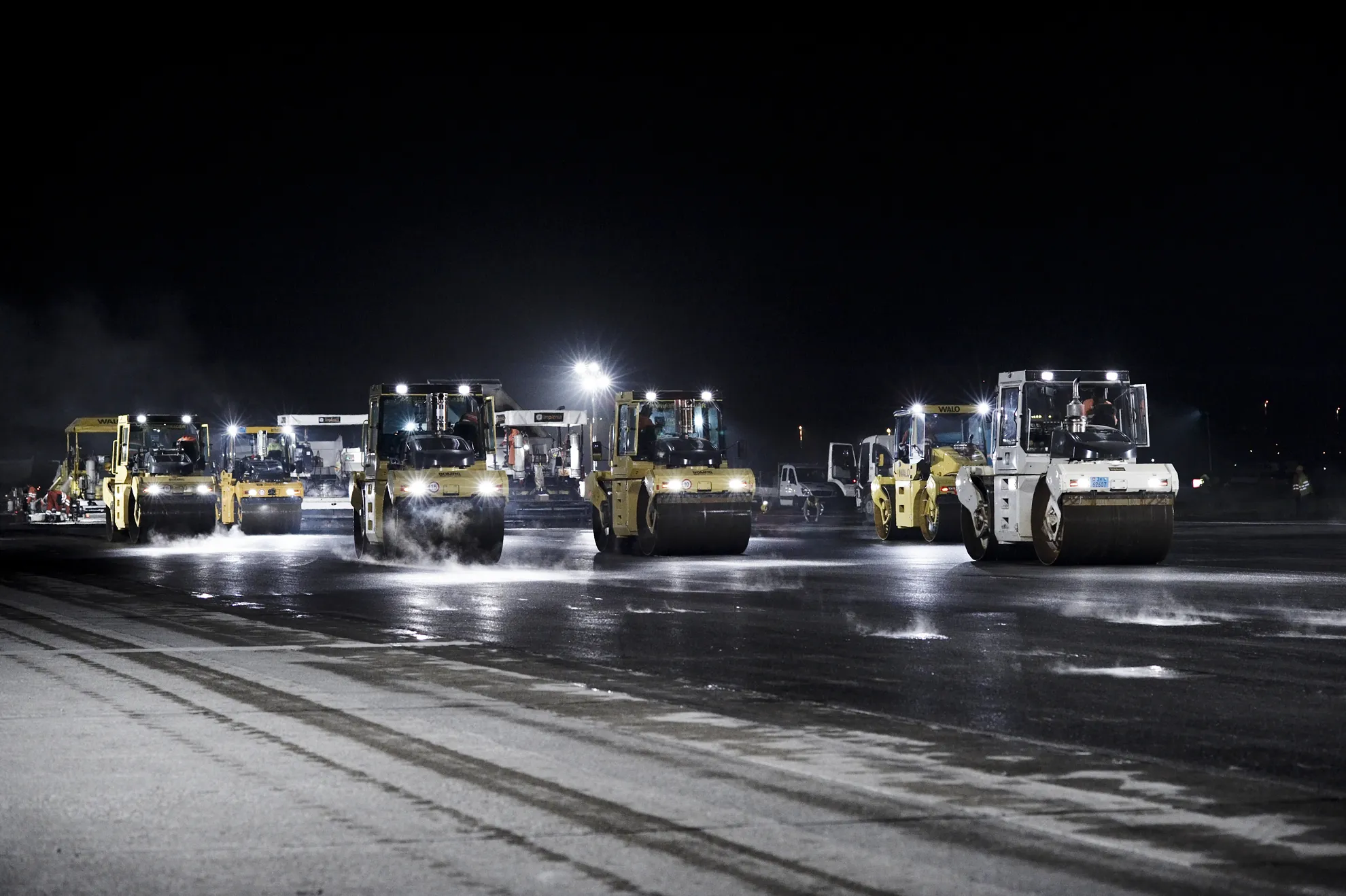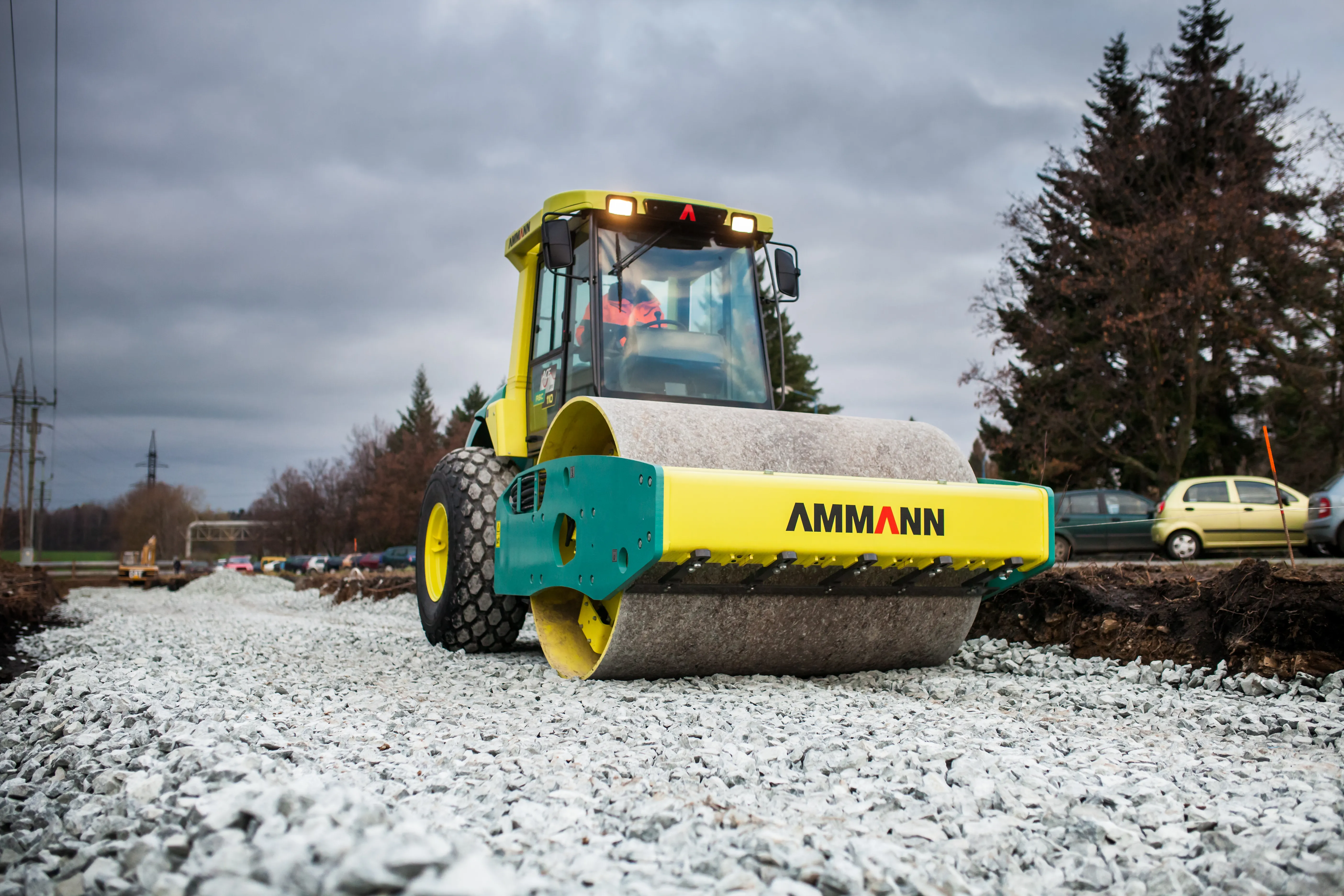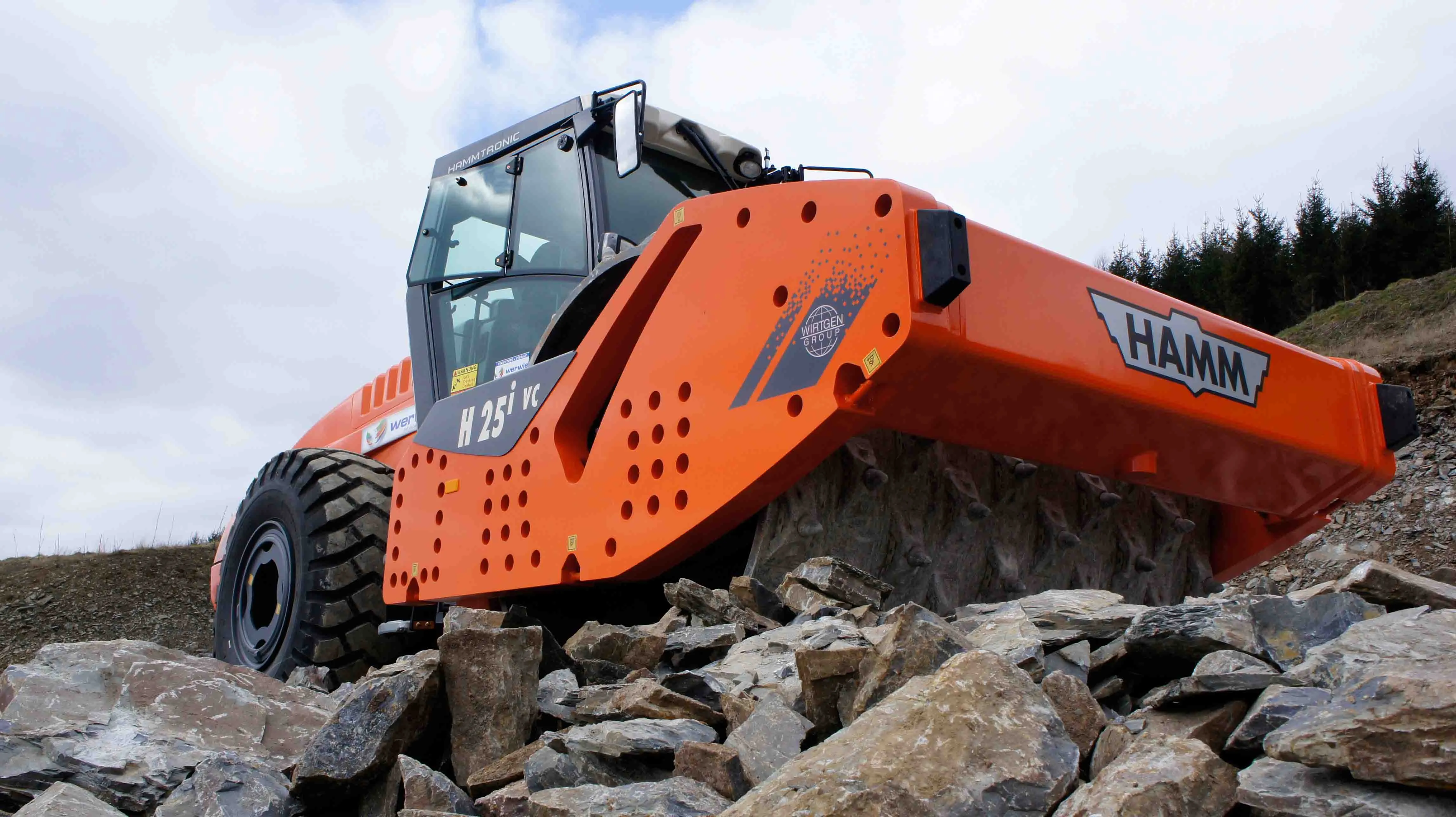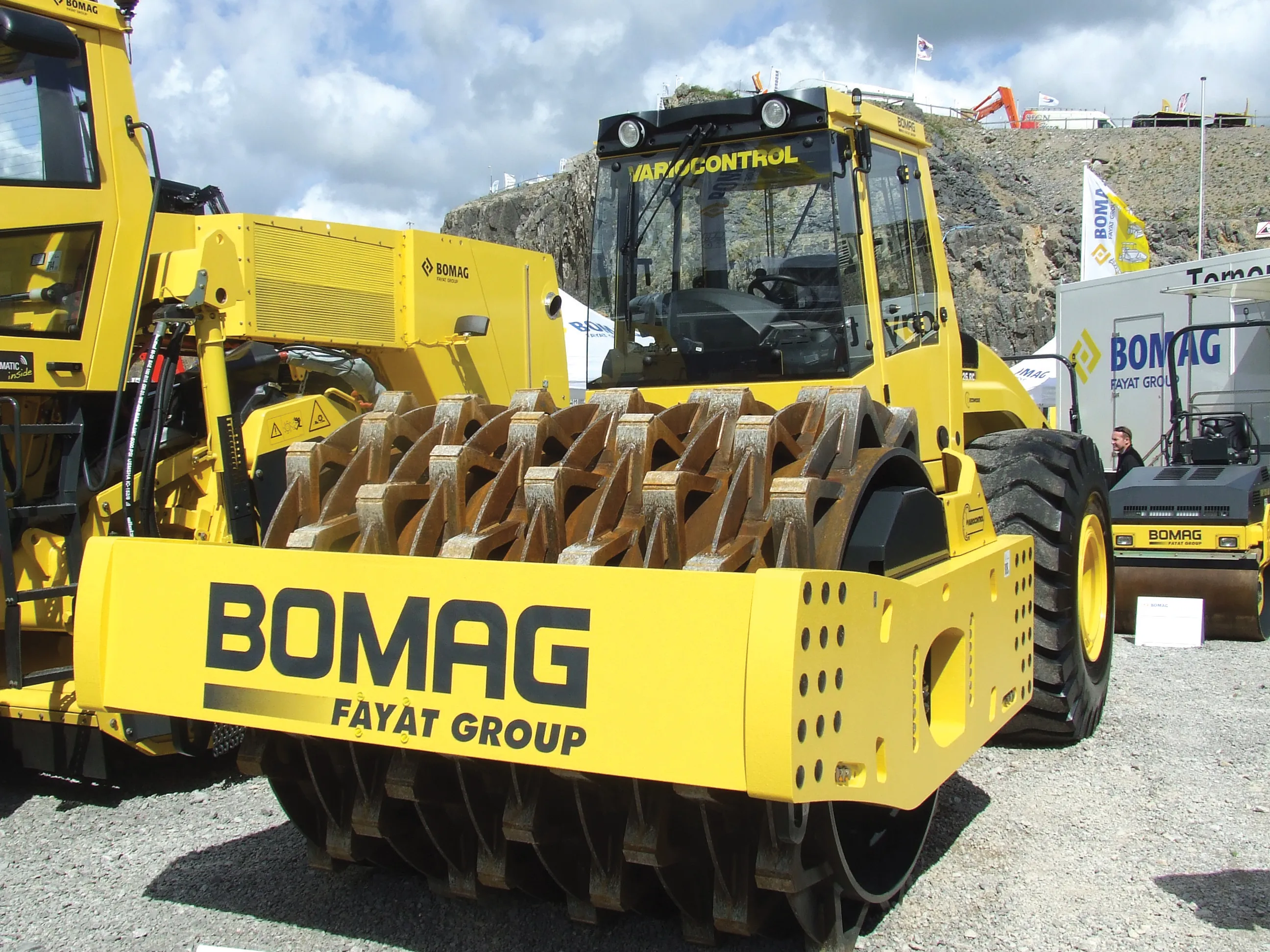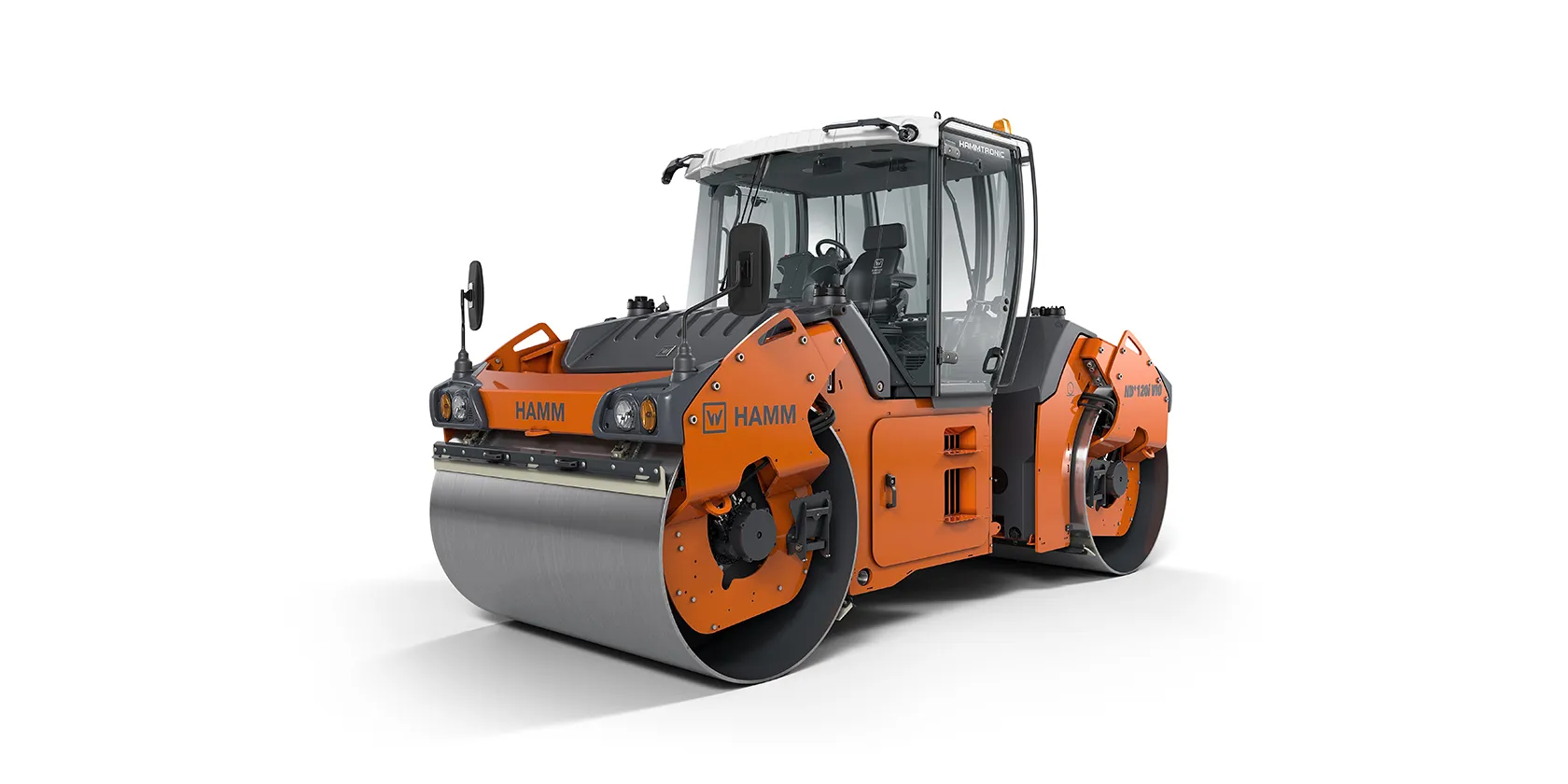
Hamm’s latest asphalt compactors now offer both vibration and oscillation capabilities for effective compaction. The HD+ 120i V-VIO 12 t tandem roller is equipped with a vibration drum at the front and a VIO drum delivering oscillation forces at the rear. High compaction forces are claimed, along with reliability, durability, productivity and ease of maintenance.
The roller is powered by a 115kW Deutz engine that meets Tier 4 Final/Stage 5 emissions requirements and features the firm’s efficient Easy Drive operating concept.
A key feature is the versatility as it offers static compaction, oscillation and vibration. The operator can switch easily between vibration and oscillation, removing the need to switch machines or deploy an additional machine and another operator on the construction site. This versatility means that the same machine can be used for different types of asphalt mixture as well as applications. The combination of vibration and oscillation delivers fast compaction in fewer double passes, suiting it to final compaction. High compaction quality is claimed even at increased working speeds.
The machine has the latest Hamm cab, offering good all round visibility as well as various interfaces to connect telematics systems, fleet management systems and digital applications for controlling and documenting compaction.
Operators can make use of the benefits of oscillation for the compaction of joints or compaction in vibration-sensitive areas such as on bridges. Oscillation also allows compaction at low outside temperatures, since a wider temperature range can be used. The system is effective in preventing particle crushing and over-compaction, has benefits when compacting distortion-sensitive materials and reduces the noise emissions and vibrations experienced on and around the construction site.


